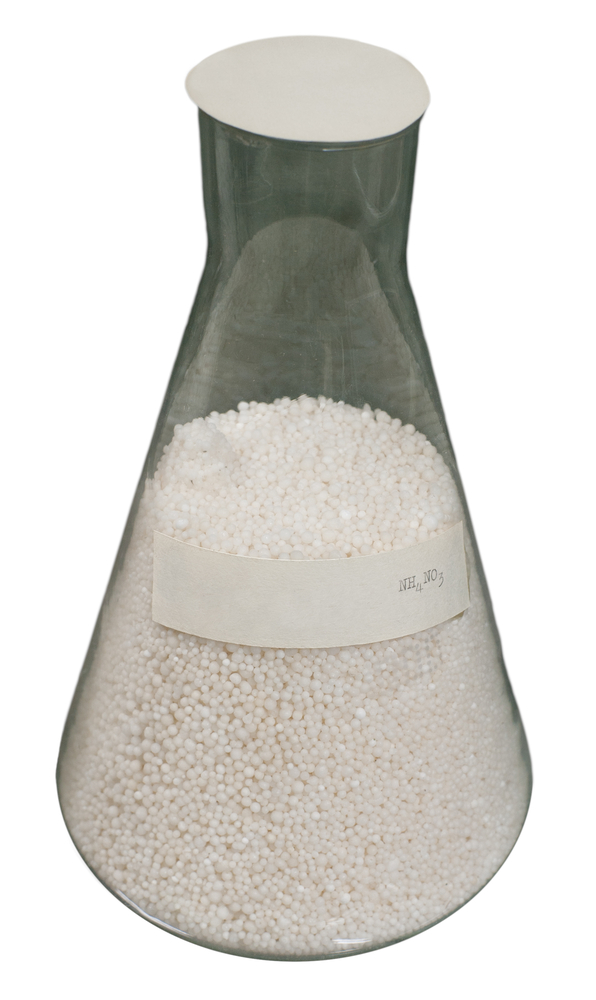 |
Ammonium nitrate (AN) is a hazardous chemical, a regulated safety concern, and an ingredient in explosives and therefore is regulated by the U.S. Environmental Protection Agency (EPA), the Occupational Safety and Health Administration (OSHA), and the Bureau of Alcohol, Tobacco and Firearms (ATF). These three agencies recently produced a document titled, Chemical Advisory: Safe Storage, Handling, and Management of Ammonium Nitrate to assist facilities with AN and reduce the potential for explosion and fires.
The National Fire Protection Association (NFPA) gives AN an instability rating of 3 on a scale of 0 to4, meaning it “is capable of detonation, explosive decomposition, or explosive reaction, but that a strong source or confinement in extreme temperatures is required.” This is a primary characteristic of concern when considering storage, handling, and management of AN and the Advisory makes a range of recommendations that when properly implemented, will minimize the potential for AN fire and explosion.
Provide environmental training that is painless, and be confident your environmental compliance issues are covered. Get it now.
Regarding storage and process controls, the Advisory recommends that facilities:
- Avoid heating AN in a confined space (Design processes to eliminate this problem, and avoid storage near heat sources such as steam pipes and heat ducts.).
- Store AN according to ATF’s Table of Separation Distances (22 CFR 555.220) to minimize exposure to explosion shock waves.
- Avoid collocating AN with combustible or organic materials, especially bulk AN near organics like grains that produce dust.
- Avoid contamination with inorganic materials (chlorides) and some metals (aluminum powder, chromium, copper, cobalt, and nickel) and use bin construction materials that are not incompatible.
- Maintain the pH of AN solutions, avoid low pH and collocating AN with acids.
- Do not store molten or solid AN in confined spaces, especially where it can react with organics such in drains and sewers.
- Store and use AN in crystal, flake, grain, or prill forms, including fertilizer, dynamite, and nitrous oxide technical grades and other mixtures with 60 percent or more by weight as regulated by OSHA’s standard Explosives and Blasting Agents 29 CFR 1910.109(i).
Train Better in 2013
Environmental Training Library combines an extensive library of prewritten environmental training materials developed by BLR’s experts. Get it Now.
Another area of concern is storage building design, including:
- Store in a single-story building without a basement unless it is open on one side.
- Make sure walls within 50 feet of combustible structures/materials are fire-resistant.
- Use noncombustible and impregnable flooring.
- Remove places molten AN can flow to and become confined in such things as drains, taps, tunnels, and pits.
- Keep buildings dry and eliminate water seepage.
- Adequately ventilate to avoid pressurization.
AN in bags and drums also require special considerations, including:
- Do not accept containers of ammonium nitrate for storage when the temperature of the ammonium nitrate exceeds 130° F.
- Store at least 36 inches below the roof or supporting beams and at least 30 inches from walls and partitions.
- Piles should not exceed 20 feet in height, 20 feet in width, and 50 feet in length (unless the building is noncombustible or protected by a sprinkler system).
- Aisles between piles should be at least 3 feet wide.
Bulk storage of AN requires particular diligence, including:
- Keep storage bins clean and contaminant-free.
- Do not use bins constructed of incompatible materials.
- Do not use explosives to break up AN.
- Protect AN from moisture absorption with impermeable sheeting or air conditioning.
- Do not store AN with organic chemicals, acids, corrosives, flammable materials, or compressed gases, or materials that require blasting during processing/handling.
- Separate AN stores from incompatible materials with separate buildings with 1-hour fire-resistant walls or 30 feet of distance.
To ensure adequate fire protection, AN storage areas should:
- Be equipped with automatic sprinklers and/or fire detection alarm systems with sprinkler systems installed according to NFPA 13, Standard for the Installation of Sprinkler Systems.
- Have fire equipment, including adequate supplies of suitable extinguishers, hydrants, and hose.
- Be separate from all previously noted substances as well as urea/urea compounds, chlorates, chromates nitrites permanganates, and finely divided metal and sulfur.
- Be nonsmoking areas.

please i need assistance of sample of contingency plan for AMMONIUM NITRATE please assist.